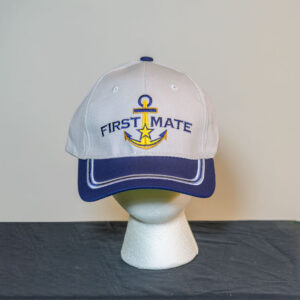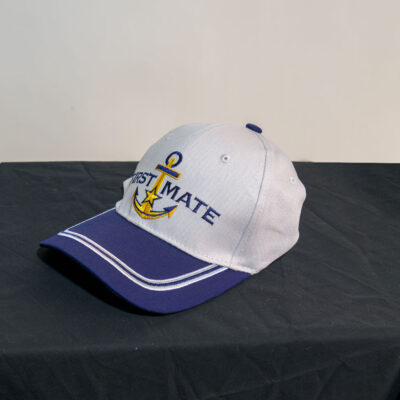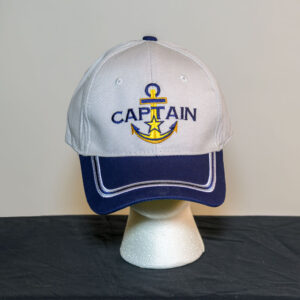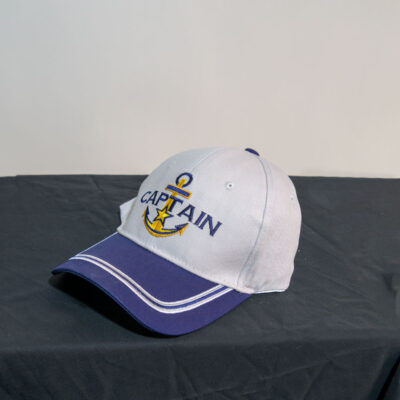Showing all 2 resultsSorted by average rating
Filters-
First Mate Hat
Quick ViewAuction EndedFirst Mate Hat
The first mate’s hat, also known as the mate’s cap or officer’s cap, is a distinctive piece of headgear often associated with maritime culture and nautical fashion. It is worn by the first mate, who is the second-in-command on a ship, assisting the captain in the management and operation of the vessel.
Similar in style to the captain’s hat, the first mate’s hat typically features a flat-topped, visorless design with a shiny black peak and a gold or silver emblem on the front. The emblem may include symbols representing maritime themes, such as crossed anchors, a ship’s wheel, or other nautical motifs. This emblem often distinguishes the first mate’s hat from other crew members’ headgear.
The first mate plays a crucial role in ensuring the smooth operation of the ship, overseeing various duties such as navigation, crew management, and cargo handling. As such, the first mate’s hat symbolizes authority, responsibility, and leadership within the maritime hierarchy.
In addition to its functional purpose, the first mate’s hat has also become a symbol of maritime tradition and seafaring heritage. It is often worn as part of a uniform by maritime professionals, including officers on commercial ships, naval vessels, and yachts. The hat’s distinctive appearance has also made it a popular accessory in nautical-themed fashion and costume attire.
Overall, the first mate’s hat represents the rich history and traditions of seafaring culture, evoking images of adventure, exploration, and life at sea.
-
Captain Hat
Quick ViewAuction EndedCaptain Hat
A captain’s hat, also known as a skipper’s hat or a yacht cap, is a distinctive type of headgear often associated with maritime culture and nautical fashion. It typically features a flat-topped, visorless cap with a shiny black peak and a gold or silver emblem on the front. The emblem usually consists of a symbol or insignia representing maritime themes, such as an anchor, a ship’s wheel, or crossed nautical flags.
The captain’s hat has become an iconic symbol of authority and leadership, often worn by captains of ships, yacht owners, and maritime enthusiasts. While historically associated with naval officers and ship captains, the hat has also been adopted as a fashion accessory and costume prop in various contexts, including themed parties, theatrical productions, and cruise ship events.
In addition to its aesthetic appeal, the captain’s hat carries symbolic significance, representing qualities such as leadership, professionalism, and maritime adventure. It is often used as a visual cue to denote authority or command in nautical-themed settings, whether on board a ship, at a maritime event, or in popular culture depictions of seafaring adventures.
Overall, the captain’s hat remains a timeless and recognizable symbol of maritime tradition and seafaring heritage, evoking images of adventure on the high seas and the romantic allure of life at sea.




